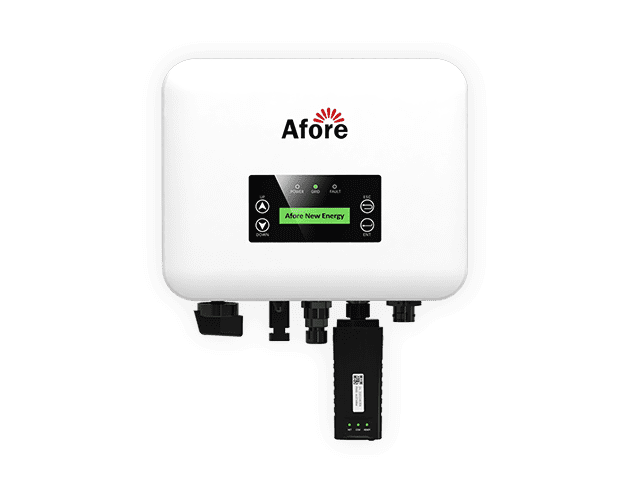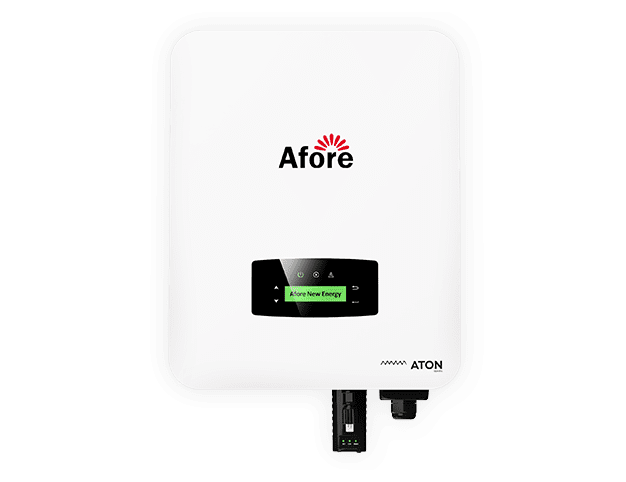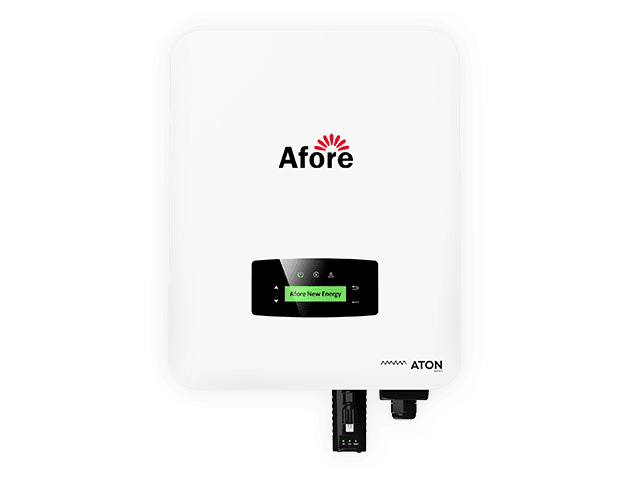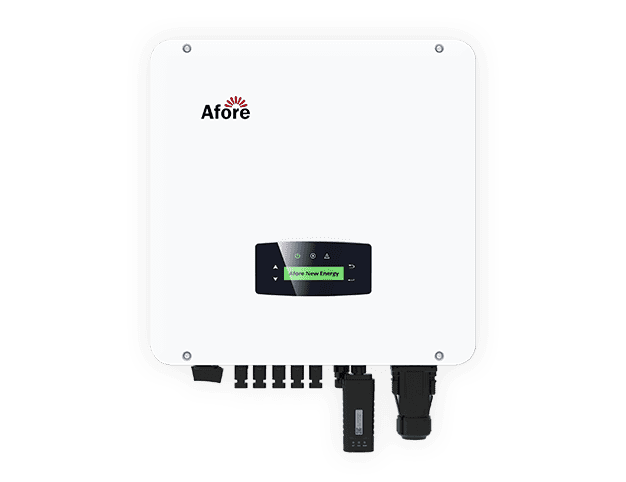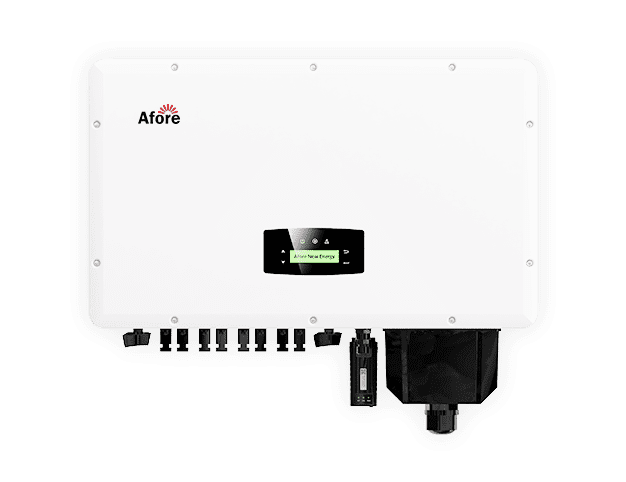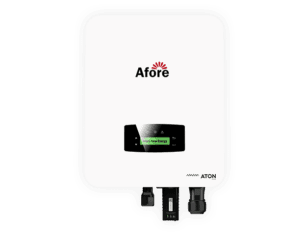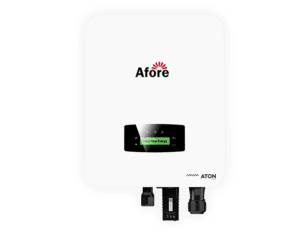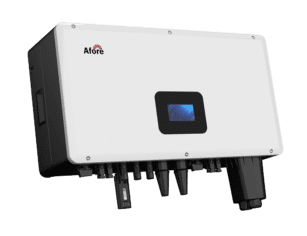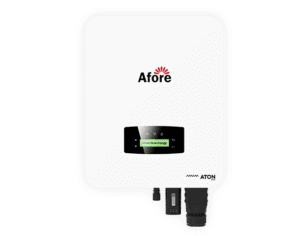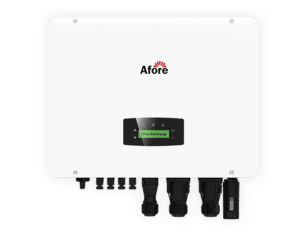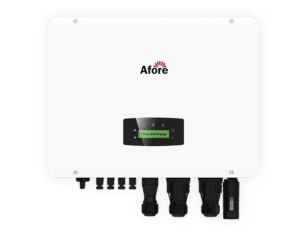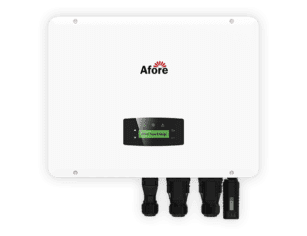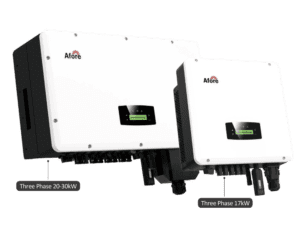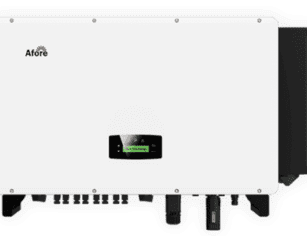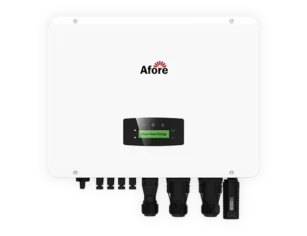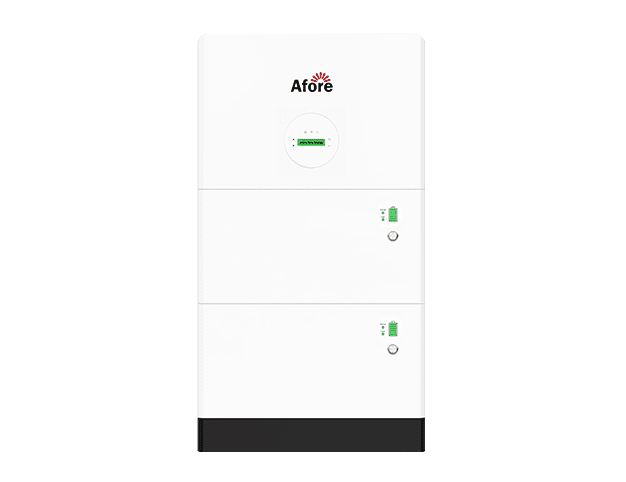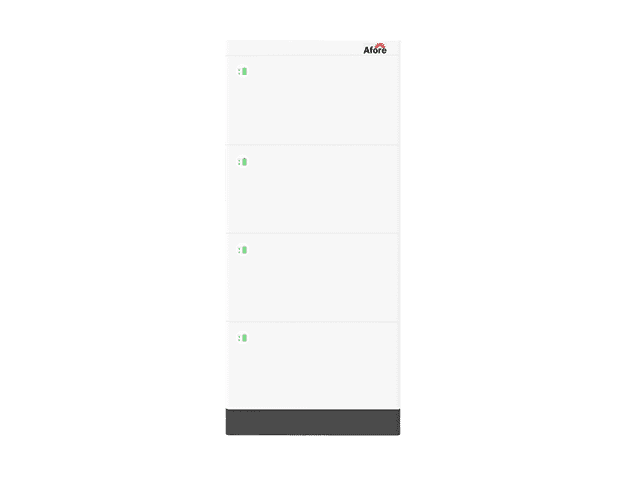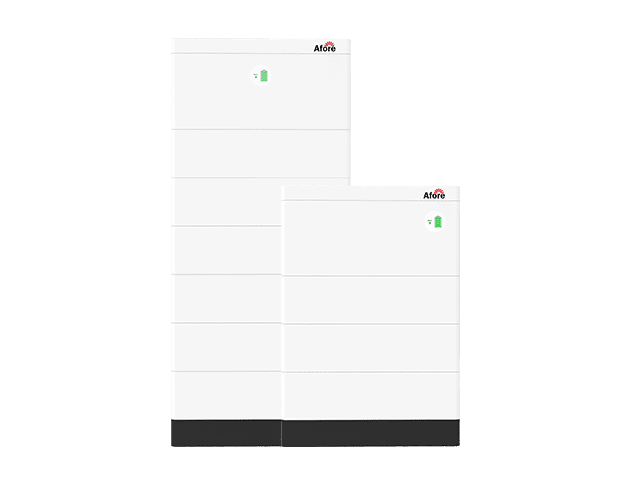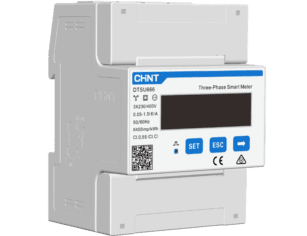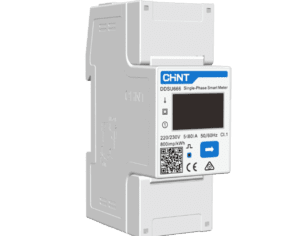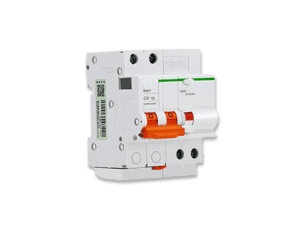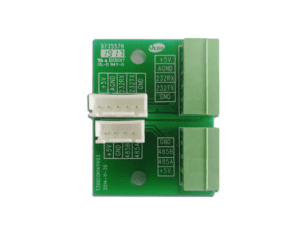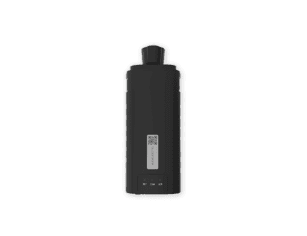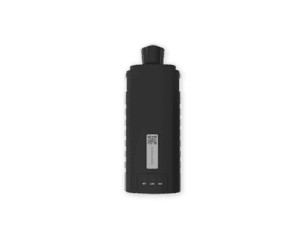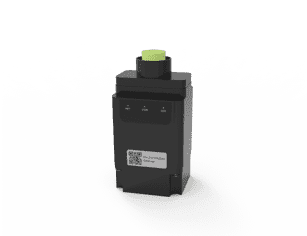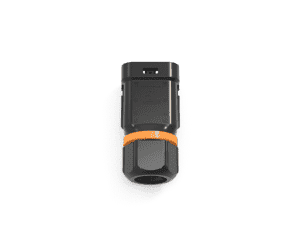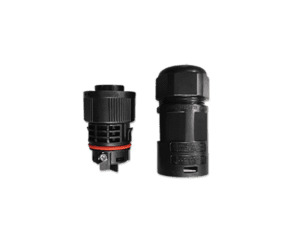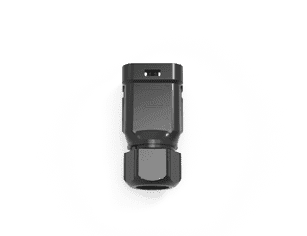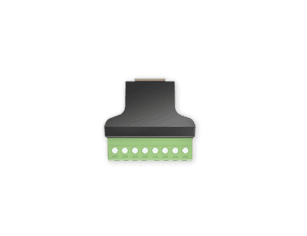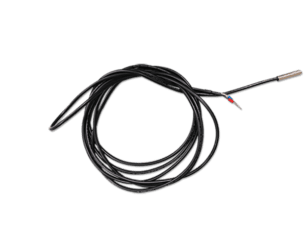Le rôle de l'onduleur dans le système solaire : Explication des principales fonctions
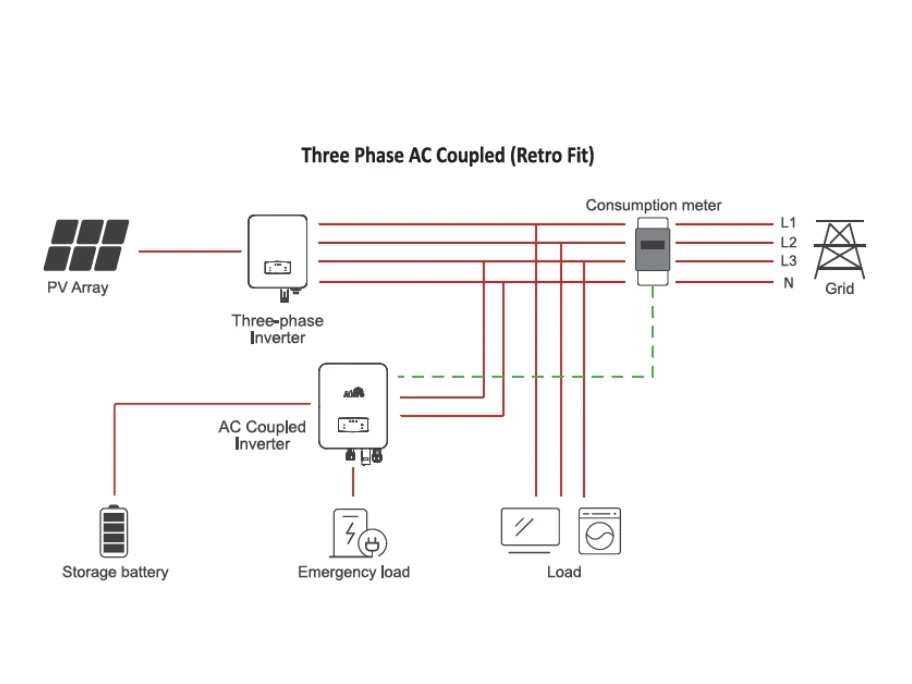
Table des matières
Alors que l'énergie solaire continue d'alimenter de plus en plus de foyers et d'entreprises à travers le monde, un composant souvent négligé joue un rôle essentiel dans l'utilisation de cette énergie : l'onduleur solaire. Si les panneaux solaires retiennent l'attention, c'est l'onduleur qui transforme l'énergie solaire brute en électricité utilisable par les lampes, les appareils électroménagers et le réseau électrique. Comprendre le rôle de l'onduleur dans la conception d'un système solaire n'est pas réservé aux ingénieurs ou aux installateurs solaires. Que vous soyez un propriétaire envisageant d'installer des panneaux sur son toit ou un défenseur du développement durable à la recherche de solutions énergétiques propres, il est essentiel de savoir comment fonctionnent les onduleurs solaires. Dans ce guide complet, nous allons explorer le fonctionnement des onduleurs, leur importance et les fonctions qu'ils remplissent dans l'écosystème moderne de l'énergie solaire.
Introduction aux onduleurs solaires
Qu'est-ce qu'un onduleur solaire ?
Si vous avez déjà envisagé de passer à l'énergie solaire, vous avez probablement rencontré plus d'une fois le terme d'onduleur solaire. Mais de quoi s'agit-il exactement ? L'onduleur solaire est le cœur de votre système d'énergie solaire. Il convertit le courant continu (CC) produit par les panneaux solaires en courant alternatif (CA), qui est celui qu'utilisent la plupart des foyers et le réseau électrique. Sans lui, vos panneaux solaires ne sont que de jolies tuiles.
Le rôle de l'onduleur dans un système solaire ne se limite pas à la conversion de l'énergie. Il gère également les performances du système, assure la sécurité et optimise l'utilisation de l'énergie. En d'autres termes, cet appareil fait beaucoup de travail en coulisse pour que votre énergie propre continue à circuler efficacement.
Pourquoi les systèmes solaires ont-ils besoin d'onduleurs ?
L'énergie du soleil frappe vos panneaux solaires, générant de l'électricité en courant continu. Mais vos appareils ménagers, votre réfrigérateur, votre lave-linge et même votre chargeur de téléphone ne fonctionnent pas en courant continu. C'est là que l'onduleur solaire intervient. Il prend le courant continu brut et inutilisable et le transforme en énergie vitale pour le système électrique de votre maison : le courant alternatif.
Mais le rôle de l'onduleur dans un système solaire ne s'arrête pas là. Dans les systèmes connectés au réseau, les onduleurs se synchronisent également avec le réseau local, ce qui garantit que l'électricité produite par votre système s'intègre parfaitement à l'infrastructure de la compagnie d'électricité.
Fonctionnement des onduleurs solaires
Le rôle de l'onduleur dans le fonctionnement d'un système solaire commence au moment où l'énergie solaire est collectée et se termine lorsqu'elle devient de l'électricité utilisable dans votre maison ou votre entreprise. Bien que cette transition semble invisible, elle implique un processus hautement technique. Que votre système soit relié au réseau ou totalement indépendant, l'onduleur solaire ne se contente pas d'actionner un interrupteur : il gère en permanence les flux d'énergie, maintient la stabilité de la tension et de la fréquence et veille au respect des règles de sécurité.
Processus de conversion étape par étape
Pour bien comprendre le rôle de l'onduleur dans un système solaire, il est utile de voir comment l'énergie est traitée une fois que la lumière du soleil atteint les panneaux solaires.
1. La lumière du soleil est captée par les panneaux solaires
Les cellules photovoltaïques (PV) convertissent la lumière du soleil en courant électrique continu. À ce stade, l'électricité n'est pas encore utilisable dans votre maison.
2. L'électricité en courant continu est acheminée vers le convertisseur solaire
C'est là que l'onduleur solaire prend le contrôle. Il reçoit le courant continu brut et commence la transformation critique.
3. Conversion de courant continu en courant alternatif
L'onduleur utilise des circuits électroniques à grande vitesse pour changer rapidement le sens du courant, formant une onde sinusoïdale qui imite le courant alternatif (CA) utilisé dans les systèmes électriques standard.
4. Réglage de la tension et de la fréquence
L'électricité convertie est calibrée pour correspondre à la tension (généralement 120V ou 240V) et à la fréquence (60Hz aux États-Unis, 50Hz ailleurs) requises afin d'assurer une intégration transparente avec votre réseau domestique ou votre système de stockage.
5. Surveillance du système et résultats
Les onduleurs intelligents surveillent également les niveaux de sortie, détectent les pannes et établissent des rapports sur les performances. Cette étape garantit des performances optimales et permet aux propriétaires de suivre leur production d'énergie en temps réel.
L'ensemble du processus est instantané et continu, ce qui démontre le rôle central de l'onduleur dans les performances, la fiabilité et la sécurité du système solaire.
Systèmes d'onduleurs raccordés au réseau et systèmes hors réseau
Tous les onduleurs solaires ne fonctionnent pas de la même manière. Leur configuration dépend en grande partie du fait que votre système est connecté au réseau électrique public ou qu'il fonctionne de manière autonome.
Onduleurs solaires raccordés au réseau
Dans les systèmes raccordés au réseau - courants dans les quartiers résidentiels - l'onduleur solaire doit faire plus que convertir l'électricité. Il doit également se synchroniser avec le réseau pour permettre un flux d'énergie bidirectionnel sûr. Lorsque votre système solaire produit plus d'électricité que votre maison n'en a besoin, l'onduleur permet d'exporter cet excédent vers le réseau. C'est là que les politiques de facturation nette entrent en jeu, en vous créditant pour l'énergie que vous fournissez.
L'un des rôles clés de l'onduleur dans la conception d'un système solaire pour les applications connectées au réseau est la protection contre l'îlotage. Cette fonction garantit que votre système s'éteint pendant une panne de courant afin de protéger les travailleurs des services publics qui réparent les lignes électriques.
Onduleurs solaires hors réseau
Dans les configurations hors réseau, l'onduleur solaire fonctionne de manière indépendante. Au lieu de se synchroniser avec un réseau, il travaille avec des systèmes de stockage de batteries pour fournir de l'électricité en courant alternatif chaque fois que cela est nécessaire. Ces onduleurs intègrent souvent des fonctions de contrôle de la charge et gèrent le moment où il faut puiser de l'énergie dans la batterie ou dans les panneaux solaires.
Certains systèmes utilisent des onduleurs hybrides, qui combinent à la fois des capacités liées au réseau et des capacités hors réseau. Leur adaptabilité les rend idéaux pour les zones où l'accès au réseau est instable ou pour les propriétaires qui souhaitent disposer d'une batterie de secours sans perdre les privilèges du réseau.
Placement de l'onduleur et considérations relatives à l'installation
Un autre aspect négligé mais crucial du rôle de l'onduleur dans le fonctionnement du système solaire est l'emplacement physique et la configuration de l'environnement. L'endroit et la manière dont vous installez votre onduleur solaire peut avoir un impact sur l'efficacité, la durée de vie et la sécurité.
Les conditions environnementales sont importantes
Les onduleurs solaires fonctionnent le plus efficacement dans des environnements frais, ombragés et ventilés. La chaleur est l'ennemie de l'onduleur ; les températures élevées peuvent provoquer un étranglement thermique, réduisant la production et, avec le temps, endommageant les composants internes. C'est pourquoi de nombreux installateurs professionnels recommandent des murs extérieurs ombragés ou des garages ventilés.
Proximité des panneaux solaires et du tableau électrique
Idéalement, l'onduleur solaire doit être installé à proximité du champ solaire et du panneau électrique principal. Cela permet de minimiser les pertes d'énergie dues à la résistance du câblage. Cependant, les conditions pratiques du site, telles que la disposition du toit et l'ombrage, peuvent nécessiter une certaine flexibilité.
Bruit et accessibilité
Bien que les onduleurs modernes soient plus silencieux que les anciens modèles, ils peuvent encore émettre un léger bourdonnement ou un cliquetis. Évitez de les placer à proximité de chambres à coucher ou d'espaces de vie calmes. Veillez également à ce que l'appareil soit facilement accessible pour l'entretien, le diagnostic et les éventuelles mises à jour du microprogramme.
Réglementations locales et conformité
En fonction de votre région, les codes électriques peuvent imposer des normes d'installation spécifiques pour l'onduleur. Consultez toujours un électricien certifié ou un installateur solaire agréé. Cela permet de s'assurer que l'onduleur solaire répond à toutes les exigences de sécurité et de conformité, ce qui constitue une autre dimension essentielle du rôle de l'onduleur dans la sécurité et la fiabilité du système solaire.

Principales fonctions d'un onduleur solaire
Lorsque les gens pensent à l'énergie solaire, ils imaginent souvent des panneaux élégants qui absorbent le soleil, mais en réalité, ces panneaux ne sont qu'une partie de l'histoire. Le véritable cheval de bataille est souvent caché dans un garage ou une buanderie : l'onduleur solaire. Il ne s'agit pas d'un simple convertisseur, mais d'un composant essentiel responsable d'une série de fonctions qui déterminent les performances de votre système, sa sécurité et même les économies que vous réalisez au fil du temps. Voyons plus en détail le rôle de l'onduleur dans l'efficacité et le fonctionnement d'un système solaire.
Conversion d'énergie
Le rôle principal de l'onduleur dans la conception d'un système solaire est la transformation de l'énergie - du courant continu (CC), produit par les panneaux solaires, en courant alternatif (CA), nécessaire au fonctionnement des habitations et des entreprises. Sans cette conversion, vos panneaux solaires produiraient de l'électricité que votre réfrigérateur, vos lampes ou votre climatiseur ne pourraient tout simplement pas utiliser.
Il ne s'agit pas non plus d'un processus passif. Un onduleur solaire moderne utilise des algorithmes avancés pour maximiser l'efficacité de cette conversion, en minimisant les pertes d'énergie et en veillant à ce que votre système fournisse autant d'électricité utilisable que possible. Plus l'onduleur est performant, moins il y a de pertes et plus les économies réalisées au fil du temps sont importantes.
Synchronisation du réseau
Pour les systèmes connectés au réseau, un autre rôle essentiel de l'onduleur dans les performances du système solaire est la synchronisation avec le réseau. Cela signifie que votre onduleur solaire doit s'assurer que l'électricité CA qu'il produit est parfaitement alignée sur les normes de tension et de fréquence du réseau électrique. Tout décalage peut entraîner des conditions dangereuses ou des arrêts automatiques du système.
Les onduleurs solaires sophistiqués peuvent même "traverser" des perturbations mineures du réseau, en maintenant la production pendant de brèves chutes ou pointes de tension. Dans certaines régions, les services publics s'appuient de plus en plus sur les onduleurs pour assurer la stabilité du réseau, ce qui a fait des onduleurs bien plus que de simples convertisseurs. Ils participent désormais activement à la gestion du réseau.
Surveillance et suivi des performances
Les onduleurs solaires d'aujourd'hui sont plus intelligents que jamais. La plupart sont équipés de fonctions de suivi des performances et de surveillance à distance qui permettent aux propriétaires et aux installateurs de connaître en temps réel le fonctionnement du système.
Cette fonction soutient un autre rôle majeur de l'onduleur dans l'optimisation du système solaire : la transparence. Que ce soit par le biais d'une application dédiée ou d'un tableau de bord Web, vous pouvez surveiller la production d'énergie par jour, par semaine, par mois ou par an. Certains onduleurs détectent également les anomalies, telles que l'ombrage des panneaux, les défaillances des chaînes ou les problèmes de câblage, ce qui permet d'accélérer la maintenance et de minimiser les temps d'arrêt.
Ces capacités de suivi sont inestimables pour s'assurer que votre investissement fonctionne comme prévu et pour diagnostiquer les problèmes avant qu'ils ne deviennent coûteux.
Sécurité et conformité
L'une des fonctions les plus importantes - mais souvent sous-estimée - de l'onduleur solaire est son rôle dans la sécurité. Les onduleurs sont conçus avec plusieurs couches de protection qui déconnectent automatiquement le système lorsque des irrégularités sont détectées.
Par exemple, dans les systèmes connectés au réseau, les onduleurs sont dotés d'une protection anti-îlotage. En cas de panne du réseau, votre système s'arrête immédiatement pour éviter d'alimenter en électricité ce qui pourrait être une ligne sous tension dangereuse pour les réparateurs. Il s'agit d'un élément essentiel de la conformité au code de l'électricité, et la loi l'exige dans la plupart des pays.
En outre, le rôle de l'onduleur dans la conformité du système solaire comprend des fonctions telles que la détection des défauts à la terre, la protection contre les arcs électriques et la régulation de la tension, qui contribuent à protéger votre maison, votre équipement solaire et l'infrastructure des services publics.
Optimisation de la puissance par MPPT
La plupart des onduleurs solaires modernes sont dotés de la technologie MPPT (Maximum Power Point Tracking). Cette fonction ajuste en permanence la charge électrique pour s'assurer que les panneaux solaires fonctionnent à leurs niveaux de tension et de courant optimaux, maximisant ainsi la récolte d'énergie même si la lumière du soleil et les conditions de température changent tout au long de la journée.
Il ne s'agit pas d'un simple détail technique, mais d'une nouvelle démonstration du rôle clé de l'onduleur dans les performances du système solaire. Le MPPT vous permet de tirer le meilleur parti de chaque rayon de soleil, transformant ainsi le potentiel en économies réelles.
Flux d'énergie bidirectionnel et gestion de la batterie
Avec l'essor du stockage sur batterie et des systèmes hybrides, l'onduleur solaire s'est vu confier une nouvelle fonction : gérer l'énergie dans deux directions. Ces onduleurs avancés ne se contentent pas d'injecter de l'énergie dans la maison ou le réseau : ils puisent également dans les réserves de la batterie en cas de besoin, tout en maintenant l'harmonie de la tension et de la fréquence.
Dans ce contexte, le rôle de l'onduleur dans le fonctionnement du système solaire devient plus dynamique. Il permet de déplacer la charge, c'est-à-dire de stocker l'énergie solaire excédentaire pendant la journée et de l'utiliser la nuit ou pendant les heures de pointe. Pour les propriétaires qui visent l'indépendance énergétique ou la fiabilité de l'alimentation de secours, cette fonction est indispensable.
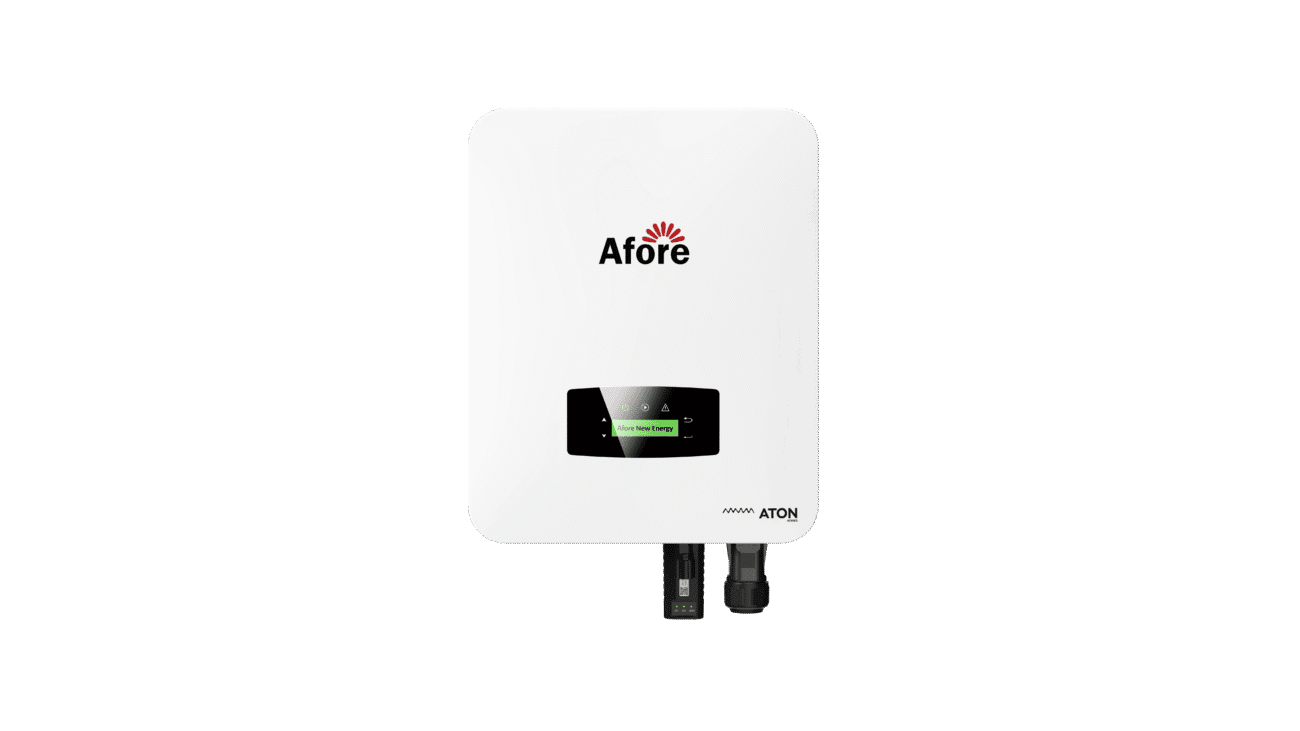
Types de convertisseurs solaires
Onduleurs à cordes
Il s'agit du type d'onduleur solaire le plus courant, dans lequel tous les panneaux sont connectés en série. Abordables et fiables, ils sont idéaux pour les systèmes bénéficiant d'une exposition uniforme à la lumière du soleil.
Micro-onduleurs
Installés sur chaque panneau individuel, les micro-onduleurs permettent une optimisation au niveau du panneau. Ils sont parfaits pour les toits ombragés ou à angles variables, car ils évitent qu'un panneau ombragé ne fasse chuter les performances de l'ensemble du système.
Onduleurs hybrides
A onduleur solaire hybride combine les fonctions d'un onduleur connecté au réseau et d'un onduleur hors réseau, et il peut charger un système de batteries. Ces onduleurs sont parfaits pour les propriétaires qui souhaitent intégrer des options de stockage.
Onduleurs centraux
Utilisés principalement pour les systèmes commerciaux ou industriels, ils gèrent des charges énergétiques importantes et ne conviennent généralement pas à un usage résidentiel. Leur rôle dans un système solaire reste cependant le même : convertir et gérer l'énergie.
Avantages de l'utilisation d'un convertisseur solaire
Lorsque les gens investissent dans l'énergie solaire, ils pensent d'abord à la quantité de lumière solaire que leurs panneaux peuvent capter. Mais la façon dont cette énergie est convertie, contrôlée et utilisée est tout aussi importante, sinon plus. C'est là que l'onduleur solaire joue un rôle central. Le rôle réel de l'onduleur dans les performances d'un système solaire ne se mesure pas seulement en termes de conversion d'énergie, mais aussi en termes d'efficacité, d'aide à la prise de décisions intelligentes et de rentabilité financière à long terme. Examinons les avantages tangibles qu'un onduleur solaire de haute qualité peut apporter à votre système.
Efficacité énergétique accrue
L'efficacité est au cœur de toute installation solaire. Alors que les panneaux produisent de l'énergie, c'est l'onduleur solaire qui détermine la quantité d'énergie que vous pouvez réellement utiliser. Un onduleur bien conçu permet de minimiser les pertes d'énergie au cours du processus de conversion et de maximiser le potentiel de chaque panneau, même dans des conditions variables.
Les onduleurs modernes équipés de la technologie MPPT (Maximum Power Point Tracking) s'adaptent automatiquement aux variations de l'intensité et de la température de la lumière solaire, ce qui permet à vos panneaux de fonctionner à leur niveau de productivité le plus élevé. Il s'agit là d'un aspect essentiel du rôle de l'onduleur dans l'ingénierie des systèmes solaires : il s'agit d'optimiser le rendement énergétique, et pas seulement de le traiter.
Considérez un toit partiellement ombragé ou une chaude journée d'été lorsque l'efficacité des panneaux chute : sans MPPT, vous pourriez perdre une quantité substantielle d'énergie. Avec les onduleurs solaires dotés de la technologie MPPT, vous récupérez une grande partie de cette perte, ce qui permet à votre système de fonctionner au maximum de son efficacité tout au long de l'année.
En outre, la possibilité de surveiller la production en temps réel (une caractéristique de nombreux onduleurs intelligents) permet aux utilisateurs de prendre des mesures proactives pour éliminer les inefficacités, par exemple en élaguant les arbres en surplomb ou en corrigeant les modules peu performants. En d'autres termes, l'onduleur solaire ne se contente pas de travailler plus dur, il travaille plus intelligemment.
Gestion intelligente de l'énergie
Au-delà de la simple conversion de l'électricité, l'onduleur solaire joue un rôle essentiel dans la gestion de l'utilisation de l'énergie solaire. Pour de nombreux propriétaires, il s'agit là de l'un des avantages les plus intéressants. Les onduleurs intelligents s'intègrent parfaitement aux systèmes énergétiques domestiques, au stockage des batteries et même à la tarification de l'électricité en fonction de l'heure de consommation.
Voici comment fonctionne en pratique la gestion intelligente de l'énergie. Supposons que vos panneaux solaires produisent plus d'électricité que votre maison n'en consomme pendant les heures de midi. Un onduleur intelligent peut détourner cet excédent d'énergie vers une unité de stockage. Ensuite, pendant les heures de pointe du soir, lorsque les tarifs des services publics sont les plus élevés, vous pouvez utiliser l'énergie solaire stockée au lieu de tirer de l'électricité coûteuse du réseau.
Ce contrôle adaptatif fait partie du rôle croissant de l'onduleur dans la flexibilité du système solaire. Grâce à une programmation intelligente de l'énergie et à un fonctionnement adapté au réseau, l'onduleur devient votre contrôleur personnel du trafic énergétique, veillant à ce qu'aucun watt ne soit gaspillé.
Les onduleurs sont également de plus en plus capables de s'intégrer à des plateformes domotiques. Vous souhaitez charger votre véhicule électrique uniquement lorsque vos panneaux génèrent un surplus d'énergie ? Un onduleur solaire intelligent peut prendre cette décision automatiquement, en fonction des données de production en temps réel et de vos préférences énergétiques.
Pour les utilisateurs de systèmes connectés au réseau, les onduleurs intelligents permettent également le contrôle à distance et la communication avec les services publics, la participation à des programmes de réponse à la demande et l'amélioration du QI énergétique de votre maison.
Le rapport coût-efficacité à long terme
Si l'investissement initial dans un onduleur solaire de haute qualité peut sembler important, le retour sur investissement à long terme en fait l'une des décisions financières les plus judicieuses de toute l'installation solaire. En d'autres termes, le rôle de l'onduleur dans la rentabilité du système solaire est à la fois immédiat et cumulatif.
Les onduleurs dotés de fonctions de surveillance et de diagnostic réduisent également les coûts de maintenance. La détection précoce des défauts ou des performances insuffisantes permet d'éviter que des problèmes mineurs ne se transforment en gros travaux de réparation. Cela signifie moins de temps d'arrêt et des économies plus régulières.
Si l'on tient compte de la facturation de l'énergie en fonction de la durée d'utilisation, des gains potentiels liés au comptage net et de l'évitement des pics de consommation d'électricité, l'onduleur devient une force discrète mais puissante dans l'équation financière de votre maison. Il ne s'agit pas seulement d'un outil de conversion de l'énergie, mais d'un atout stratégique pour maximiser le retour sur investissement de l'énergie solaire.
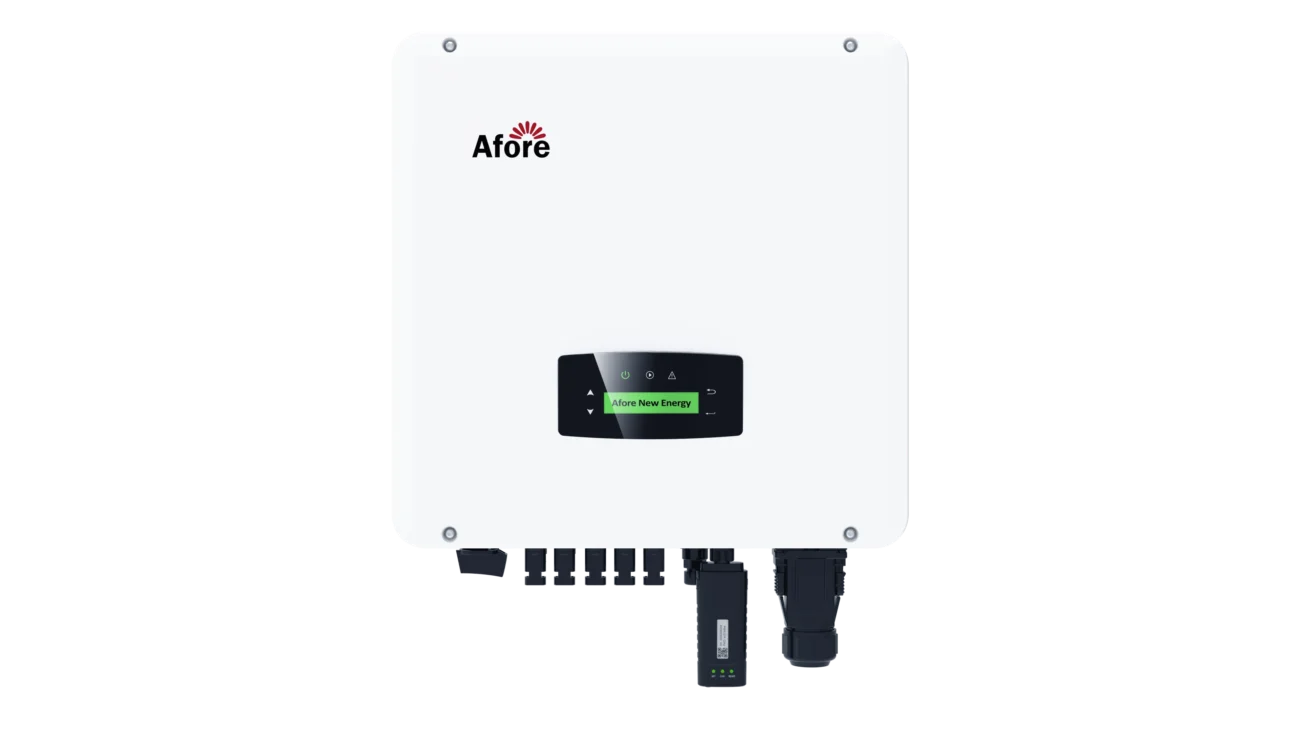
Défis et considérations
Dimensionnement et sélection de l'onduleur
Le choix d'un onduleur solaire adapté ne se résume pas à une question de puissance nominale. Des onduleurs surdimensionnés ou sous-dimensionnés peuvent réduire l'efficacité du système. Un onduleur bien dimensionné maximise votre retour sur investissement.
Entretien et durée de vie
Le rôle de l'onduleur dans un système solaire consiste également à assurer des performances constantes tout au long de sa durée de vie, qui est généralement de 10 à 15 ans. Une maintenance régulière, comme le nettoyage et les mises à jour du micrologiciel, peut prolonger sa durée de vie.
Progrès technologiques
Des diagnostics basés sur l'IA à l'intégration de l'IdO, l'onduleur solaire devient plus intelligent et plus convivial. Dans un avenir proche, ces appareils offriront encore plus de contrôle et de perspicacité, améliorant ainsi la fiabilité des systèmes d'énergie solaire.
Le rôle des onduleurs dans les services de réseau
Traditionnellement, les onduleurs solaires étaient uniquement considérés comme des dispositifs permettant de convertir l'électricité d'une forme à une autre. Mais à mesure que les énergies renouvelables se développent et que les réseaux modernes deviennent plus dynamiques, le rôle de l'onduleur dans l'infrastructure du système solaire a évolué bien au-delà de la simple conversion d'énergie. Les onduleurs solaires d'aujourd'hui servent de dispositifs intelligents d'interaction avec le réseau, contribuant activement à la stabilité du réseau, à la qualité de l'énergie et même à la résilience du réseau. À bien des égards, ils ne se contentent plus de soutenir le réseau, ils en font partie intégrante.
Les fournisseurs de services publics, les régulateurs de l'énergie et les fabricants de systèmes solaires conçoivent désormais leurs systèmes en tenant compte des services de réseau. Voici comment les onduleurs modernes répondent aux exigences d'un avenir énergétique décentralisé.
Soutien au réseau et régulation de la fréquence
L'une des exigences les plus critiques dans le fonctionnement du réseau électrique est le maintien de la stabilité de la fréquence. Dans la plupart des régions, la fréquence standard est de 50 ou 60 Hz. S'il y a trop ou trop peu d'électricité sur le réseau, cette fréquence peut dévier - et même de petites variations peuvent avoir des conséquences importantes pour les équipements électriques sensibles.
Les onduleurs solaires modernes, en particulier ceux classés comme "intelligents" ou "onduleurs de formation de réseau avancés", sont désormais équipés pour soutenir cet équilibre. En ajustant instantanément la production d'électricité solaire en fonction des changements de fréquence, ces onduleurs jouent le rôle de premiers intervenants lorsque le réseau commence à se déstabiliser.
Cette fonction est particulièrement importante dans les zones à forte pénétration solaire. Comme de plus en plus de sources d'énergie distribuées se connectent au réseau, le rôle de l'onduleur dans la conception du système solaire doit évoluer vers une coordination active avec l'infrastructure du service public. Les onduleurs dotés de capacités de réponse en fréquence permettent d'atténuer les hausses ou les baisses soudaines de la demande d'électricité, évitant ainsi les pannes ou les problèmes de qualité de l'électricité.
Notamment, des programmes tels que la règle 21 de la Californie et la norme allemande VDE-AR-N 4105 exigent déjà que les nouveaux onduleurs solaires intègrent ces fonctionnalités de soutien au réseau dans le cadre de leur conformité à la norme.
Participation à la réponse à la demande
La demande d'énergie n'est pas statique. Elle augmente à certaines heures, par exemple en début de soirée lorsque les gens rentrent chez eux et utilisent leurs appareils, et diminue tard dans la nuit. Ces pics et ces creux constituent un défi pour les opérateurs de réseaux, qui doivent soit augmenter la puissance des centrales électriques, soit réduire la consommation en temps réel pour maintenir l'équilibre du réseau.
Les onduleurs solaires intelligents participent de plus en plus aux programmes de réponse à la demande conçus pour répondre à ces fluctuations. Grâce à des signaux coordonnés provenant d'opérateurs ou d'agrégateurs de services publics, l'onduleur de votre système solaire peut réduire temporairement sa production, stocker de l'énergie dans une batterie ou déplacer le flux d'énergie, le tout en fonction des besoins du réseau en temps réel.
Il s'agit d'une évolution passionnante, car elle fait des systèmes solaires résidentiels des contributeurs actifs à la stabilité du réseau, plutôt que des participants passifs. Le rôle de l'onduleur dans l'équilibrage énergétique du système solaire ne se limite plus à votre toit. Il fait partie d'un effort plus large et orchestré pour moderniser la façon dont l'électricité est distribuée et consommée.
Les propriétaires peuvent également en tirer des avantages financiers. Sur certains marchés, la participation à la réponse à la demande peut vous donner droit à des crédits ou à des tarifs d'électricité moins élevés. Tout cela est possible grâce aux capacités de prise de décision et de communication en temps réel de l'onduleur.
Contrôle de la tension et gestion de la puissance réactive
Une autre fonction clé du réseau que les onduleurs solaires modernes prennent en charge est la régulation de la tension et le contrôle de la puissance réactive. Vous ne pensez peut-être pas à la tension lorsque vous actionnez un interrupteur, mais les compagnies d'électricité doivent veiller à ce que l'énergie soit fournie dans une plage de tension très étroite. Une tension trop élevée ou trop basse peut endommager les appareils ou perturber l'acheminement du courant.
Là encore, le rôle de l'onduleur dans les installations solaires devient crucial. Les onduleurs intelligents peuvent détecter automatiquement les variations de tension sur le réseau et réagir en ajustant leur propre production, soit en augmentant, soit en diminuant la puissance réactive qu'ils fournissent.
La puissance réactive ne produit aucun effet en soi (elle n'alimente pas vos appareils), mais elle est essentielle pour maintenir les niveaux de tension sur les longues lignes de transmission. Traditionnellement, cette tâche incombait aux grandes centrales électriques centralisées. Aujourd'hui, grâce à des onduleurs intelligents répartis entre des milliers de foyers et d'entreprises, la régulation de la tension est décentralisée et plus résistante.
En fait, certains onduleurs solaires peuvent même fonctionner en mode "Volt/VAR", c'est-à-dire qu'ils régulent dynamiquement la puissance réactive en fonction des mesures de tension en temps réel. Cela permet non seulement d'améliorer la fiabilité du réseau, mais aussi de réduire la nécessité de procéder à des mises à niveau coûteuses des infrastructures.
Dans les endroits où les réseaux sont faibles ou instables, comme les zones rurales ou les régions dont l'infrastructure est vieillissante, cette fonctionnalité n'est pas seulement utile, elle est transformatrice.
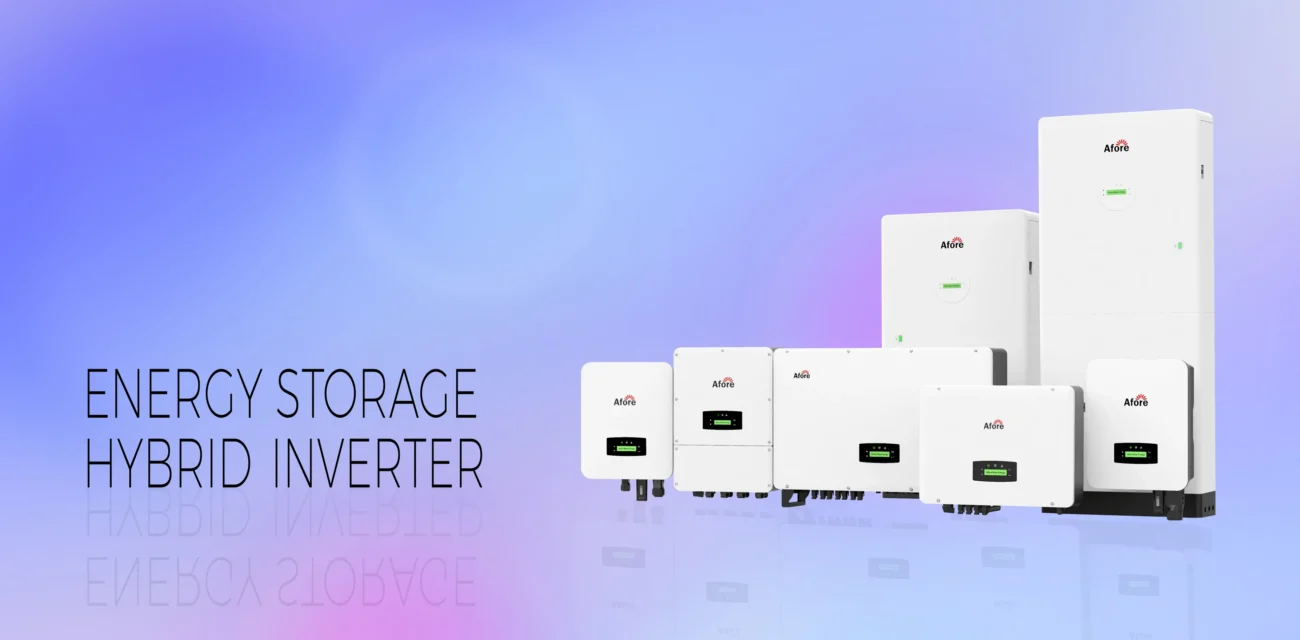
Conclusion
De la conversion de l'énergie à la surveillance des performances, de la synchronisation du réseau aux contrôles de sécurité, le rôle de l'onduleur dans un système solaire est indispensable. La technologie évolue, tout comme la capacité de l'onduleur à fournir des solutions énergétiques plus intelligentes et plus efficaces.
En fin de compte, le meilleur onduleur solaire pour votre installation dépend de vos objectifs énergétiques, de votre budget et de la conception de votre système. La consultation d'un installateur certifié et l'examen de vos données de consommation peuvent vous aider à prendre une décision éclairée.
La prochaine fois que vous regarderez vos panneaux solaires, rappelez-vous que le travailleur silencieux et acharné qu'est l'homme de la rue est le plus important. onduleur solaire En coulisses, le système solaire fait bien plus que ce que l'on voit. Il ne s'agit pas seulement d'une partie de votre système solaire, c'est le cerveau de l'opération.
FAQ sur les onduleurs solaires
-
À quoi sert l'onduleur ?
L'objectif principal d'un onduleur solaire est de convertir le courant continu (CC) produit par les panneaux solaires en courant alternatif (CA), qui est le type d'électricité utilisé par vos appareils électroménagers et le réseau public. Cette transformation est essentielle : sans elle, l'énergie générée par vos panneaux serait inutilisable.
Mais au-delà de cette fonction de base, le rôle de l'onduleur dans le fonctionnement d'un système solaire comprend également l'optimisation de la puissance, la surveillance du système et la garantie de la sécurité en détectant les défauts et en se déconnectant du réseau pendant les pannes. Il ne s'agit pas d'un simple convertisseur, mais d'un véritable gestionnaire d'énergie. -
Pourquoi avez-vous besoin d'un onduleur solaire ?
Vous avez besoin d'un onduleur solaire car c'est le seul composant qui rend l'énergie solaire utilisable dans votre vie quotidienne. Les panneaux solaires produisent de l'électricité en courant continu, mais presque tous les appareils de votre maison - de vos lampes au chargeur de votre ordinateur portable - fonctionnent en courant alternatif.
Le rôle de l'onduleur dans la conception d'un système solaire va au-delà de la nécessité technique. Les onduleurs permettent de suivre les performances énergétiques, de s'intégrer au stockage par batterie et même de participer aux services du réseau tels que la régulation de la fréquence et le contrôle de la tension. En d'autres termes, sans un onduleur fiable, vos panneaux solaires seraient incapables de fournir des avantages énergétiques concrets. -
L'énergie solaire peut-elle fonctionner sans onduleur ?
Dans des cas très rares et spécialisés, comme les petits systèmes hors réseau qui n'alimentent que des appareils à courant continu, les installations solaires peuvent techniquement fonctionner sans onduleur. Cependant, pour la grande majorité des applications résidentielles et commerciales, un onduleur solaire est absolument nécessaire.
Le rôle de l'onduleur dans l'intégration d'un système solaire devient particulièrement vital lorsqu'il s'agit de se connecter au réseau, d'utiliser des batteries de stockage ou de gérer des fonctions domestiques intelligentes. Sans onduleur, il n'y aurait aucun moyen de convertir efficacement et en toute sécurité l'énergie solaire en électricité utilisable. -
Pourquoi les cellules solaires ont-elles besoin d'un onduleur ?
Les cellules solaires produisent naturellement de l'électricité en courant continu (CC). Cependant, l'infrastructure électrique standard - y compris le câblage domestique, les réseaux de distribution et la plupart des appareils - nécessite du courant alternatif (CA). C'est pourquoi les cellules solaires ne suffisent pas.
L'onduleur solaire agit comme un traducteur, prenant l'énergie brute et inutilisable du courant continu et la convertissant en une forme utilisable par votre maison. En outre, le rôle de l'onduleur dans l'installation du système solaire garantit que l'énergie est non seulement convertie, mais aussi optimisée, surveillée et fournie en toute sécurité et en synchronisation avec le reste du réseau. -
Quelle est la durée de vie des onduleurs solaires ?
La plupart des onduleurs solaires sont conçus pour durer entre 10 et 15 ans, bien que certains modèles haut de gamme, en particulier les onduleurs hybrides et les micro-onduleurs, puissent durer jusqu'à 20 ans s'ils sont correctement entretenus. Contrairement aux panneaux solaires, qui sont souvent garantis 25 ans, les onduleurs ont généralement une durée de vie plus courte et peuvent devoir être remplacés une fois pendant la durée de vie de votre système solaire.
La longévité de votre onduleur est également liée à son rôle dans le système solaire. Comme il gère en permanence le flux d'énergie, les niveaux de tension et les diagnostics du système, il fonctionne dans des conditions exigeantes. Le choix d'une marque réputée, l'installation dans une zone bien ventilée et la mise à jour du micrologiciel sont autant de moyens d'allonger sa durée de vie et de maintenir les performances du système à un niveau élevé.




